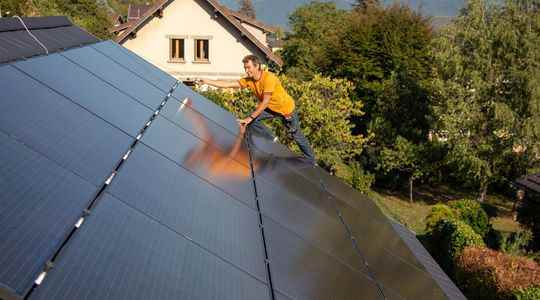Contrary to the immediate news, climate change is part of the long term. Its dramatic consequences must nevertheless make it a major subject of concern in our century, but their episodic or distant occurrence means that the decisions to reduce this risk are constantly postponed.
Yet the solutions are before our eyes. Most have been known for a long time: wind power on land or at sea, large solar farms, hydraulics, geothermal energy. Others point the tip of their nose. This is the case with green hydrogen or carbon capture and sequestration. Their development is inevitable and in fact well under way. Our way of consuming energy is also proving to be a fantastic breeding ground for decarbonization, through more efficient methods of consuming heat and electricity, which allow us to be more efficient without losing comfort. In this range of solutions at our hand, decentralized renewable energies coupled with storage and digital tools, or microgrids in English, are among the most promising. In other words, it is a local production of green energy, on the scale of a residential building or a business site, and an optimization of this networked system thanks to digital tools.
Schematically, it is a question of producing electricity from energy sources available on site thanks to solar energy integrated into the building, geothermal energy or even biomass, to add batteries to store energy not immediately consumed and connect the system to a digital platform to view consumption and production, take into account external parameters such as the weather and optimize system operation in real time. In the event that decentralized production exceeds the consumption of the building or site, the excess energy produced can be sent back to the main network.
Regulatory and tax incentives
If they were not born in 2022, the different technologies for creating these “microgrids” are reaching quite interesting levels of maturity. Equipment costs have dropped significantly in recent years. But payback time still varies from country to country depending on the availability of renewable energy, prevailing policies and regulatory incentives.. In Australia, Japan or Germany, the average cost per kilowatt hour can exceed 20 cents. The system for fixing wholesale electricity prices in Europe, which results in indexing them to the price of natural gas, contributes to strengthening the economic interest of decentralized production for large industrial and tertiary consumers. Finally, feed-in tariffs in some countries encourage the resale of excess generation on the main grid.
Businesses and individuals are adopting these solutions for a variety of reasons. This is for some to reduce their energy bill. For others, to actively contribute to the reduction of carbon emissions within the framework of their commitments vis-à-vis the market with the local consumption of a carbon-free electricity source. With their customers, it is also a reason for communication. Finally, these tools make it possible to secure their power supply on the margins of the main network, in particular when users cannot tolerate massive power cuts. This is the case with hospitals.
We understand better why, therefore, the demand for decentralized solutions – in full or just a brick like solar integrated into buildings – is exploding worldwide. The annual growth rate has been in double digits for the past five years, and the trend is expected to continue. The potential of decentralized electricity production could be 30% of global demand. More than half of American and German roofs, two-thirds of British roofs and 80% of Australian roofs, for example, would be eligible for solar energy production.
While electricity consumption will continue to increase with demography, the urbanization of the planet, the development of digital uses, these prospects are very encouraging and rely on controlled technologies. To achieve decarbonization, energy will have to be green, but it will also have to be more local.
